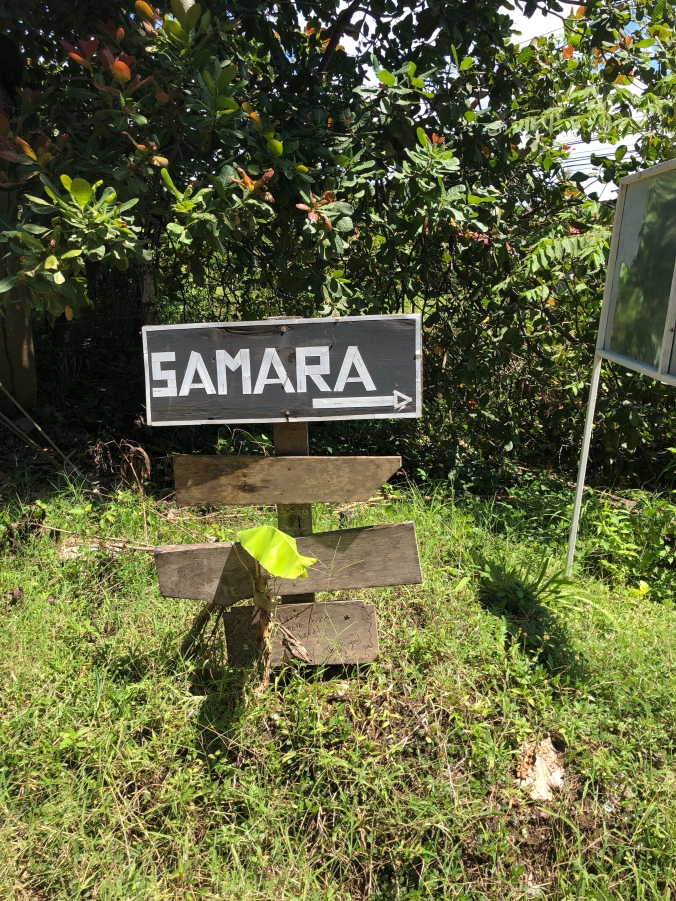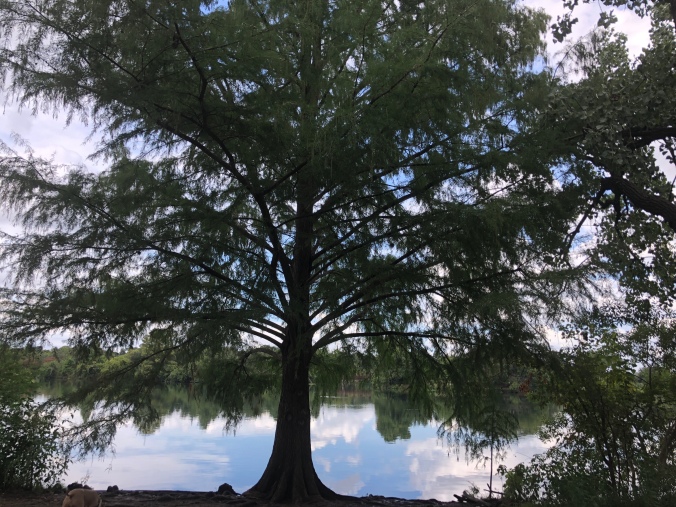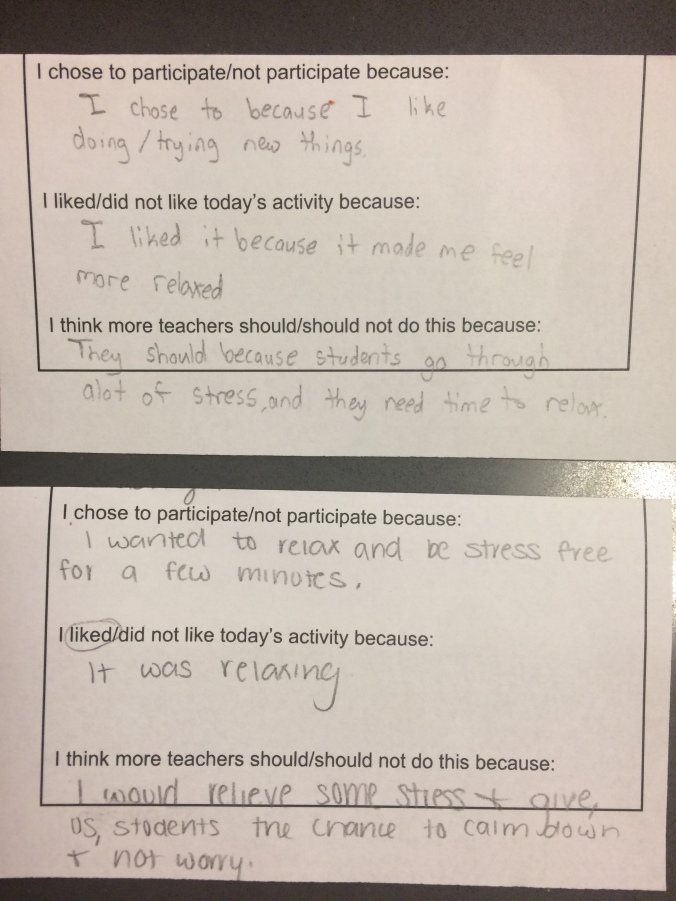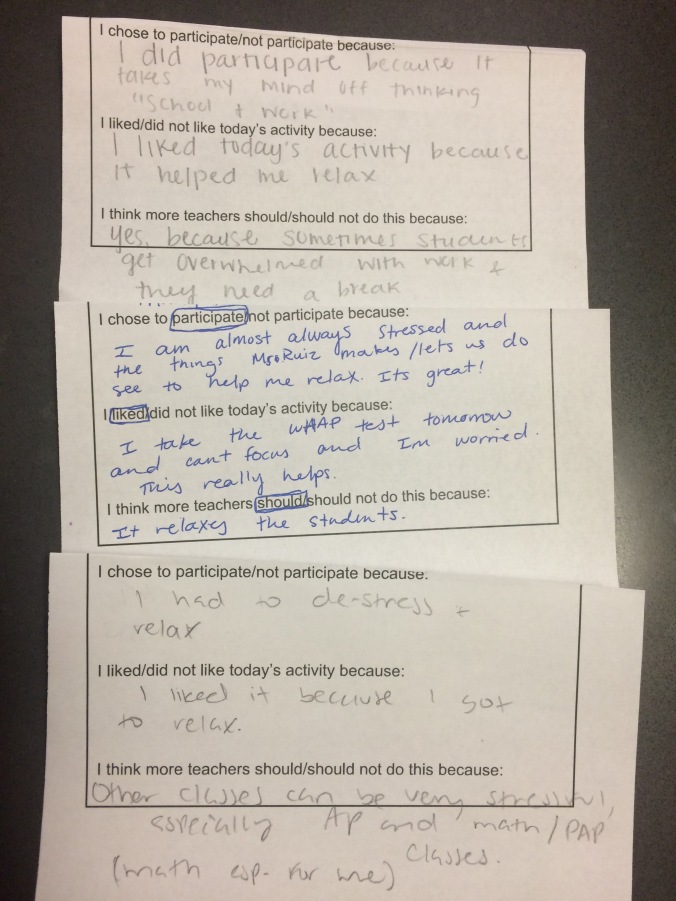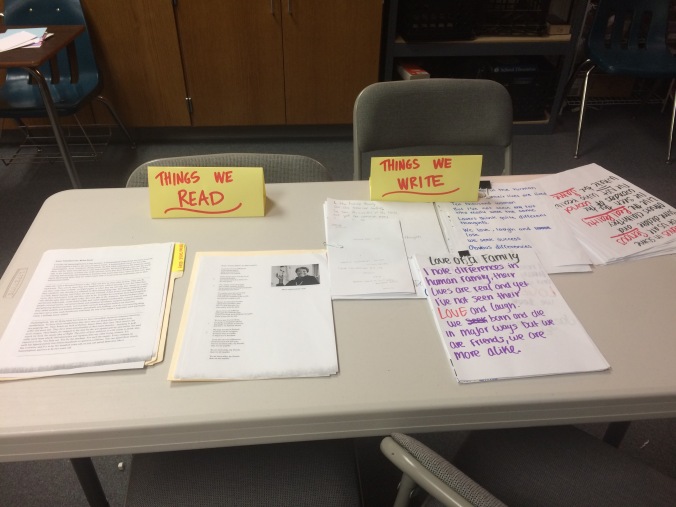I’ve mentioned before I’ve been teaching for over ten years, and I’ve told many people that unless you’re a teacher, there are some things you just won’t understand. You won’t know what it’s like to spend hours planning for a sub, just to take a day or two off, only to have the sub do nothing of what you planned; you won’t know what it’s like to have a student be a complete sweetheart one day and a complete jerk the next; you won’t know what it’s like to watch a kid finally GET IT and blush from being proud. I could go on, but I think you know what I mean. I have come to realize that from all of my teacher experiences, I have developed a “teacher heart”, dedicated to all the feelings associated with my students, classroom, and school. I consider myself lucky in that for the first 12 years of my career, I never had my teacher heart break. However, during that time I witnessed the heart break of several colleagues due to losing a current or former student, usually to car accidents and terminal illnesses. I remember waking up to a friend’s panicked phone call after she got the news that one of her students was killed while skateboarding near a busy street in town. I remember feeling completely helpless on the phone, wanting nothing but to wrap my arms around her and to let her know she wasn’t alone. But I was separated from her not only by physical distance, but also by the lack of actually knowing what it meant to have my teacher heart break.
Unfortunately, after this school year, I now know very well what it feels like to lose a student, because I have lost two. To lose two kids in one year has not only been shocking, but it has been a challenging learning experience as well. I have been reminded how fragile life is, and it has encouraged me to be even more open and available to my current students. The students I lost, “OC” and David, were no longer in my classes; one had graduated and one had moved schools, and I don’t know if that makes the circumstances easier or more difficult. I do know that students don’t really understand what it means to be a teacher’s “kid”. I’m not a mother but I consider all of my students “my kids” and that to some degree, they will always be my kid. As a teacher, I spend more time with them during the school year than they do with some of their friends or family, and actually get to know them. I worry about how they’re doing in other classes and whether or not they know they’re capable of so much more than what high school will ever show them. I give them silly stickers and smile at them in the halls. I try to go to their games (at least one per sport!), concerts, and club events. I know if they’re having a bad day or good day, what they like or don’t like, and more often than not, what they want to do in the future. When it comes down to it, I guess you could say my students are my teacher heart.
This past October was the first time a piece of that heart broke. I got the sad news that Collins “OC” Chima, had passed away in his sleep. OC was only 18 and had just graduated a few months before in June. He was studying to be a doctor and all signs pointed toward his success. My memories of OC involve his rowdy, end-of-the-day class, and the laughter he often caused. He was always in a good mood and always respectful to me. The day of his funeral did not match his spirit; it was rainy and cold. But a speech by one of his best friends, Derek, brightened the mood. The eulogy he wrote was beautiful and filled with both love and humor. Derek was another former student of mine and I had never been more proud of him than in that moment. He did one of the hardest things in life; he said goodbye to a friend and promised to keep moving on with his own life. He reminded me what it is to be strong even when you feel weak, and what it means to have hope even when you hurt. I left the reception knowing that while OC is gone, his family and friends will carry his memory and love for years to come.
When I got back to school that following Monday, without being too emotional, I was very honest with my kids about what I was feeling. I told them how much it meant to me for them to know that life is short and unpredictable, and that for whatever reason, we’re in each other’s lives and that we have to use our time to work together in a positive way. They seemed to agree. My teacher heart began to heal.
A few months later in February of this year, exactly one month ago today, my other former student, David “Pronto” Joseph, died. David once told me that he called himself “Pronto” because of how fast he was on the football field. I went to a couple of his games and he definitely had talent. In class, David was a bit of a class clown but knew when it was time to work.
The circumstances surrounding David’s death are much different than OC’s. When David died, I actually tried to start this blog post about a hundred different times because I couldn’t wrap my mind around what happened, and I find writing therapeutic. You see, when OC died, I had a general understanding of what happened and felt like his death was an unfortunate part of his life. I honestly didn’t feel the need to write about it because I talked about it at length with other teachers and friends, and felt some sense of closure at his funeral and at the memorial service we held over the holidays. What’s glaringly different is that David didn’t die in his sleep or even in a tragic car accident; David Joseph was shot and killed by an Austin police officer.
I wrote my first draft of this post on February 12th, 4 days after David was killed, and I understand now that the 12th was still too soon for me; I was only beginning to process what happened and how my students–specifically David’s friends-would be impacted. I found out David died the way so many others were informed: through social media posts and through the official police conference that was held on Tuesday, February 9th, a full day after the fact. When the conference ended, I realized that I actually had heard about the shooting late Monday evening, and the headline “Police Shoot Naked Man” flashed through my head. I remember listening to the story and thinking it was yet another questionable police shooting, and wondering why anyone would shoot a naked person since they’re obviously unarmed. I did not think twice that I could possibly know the “man” that was killed. I did not think twice that it would be one of my former students since the news kept saying “man”. David Joseph was a 17 year old boy; he was a naked, unarmed, 17 year old boy that was shot and killed by an adult with a weapon.
I watched the police conference at school during lunch and I immediately had so many unanswerable questions. More than anything, though, I was angry and my teacher heart started to break, not just for David and his family, but for my other kids; the ones I knew were still close with David even though he had transferred schools the previous year. I wanted to know if they were okay and even had other teachers track them down for me since most of them are seniors and not in my class anymore. One by one, those kids showed up and one by one they all had the same look of sadness: they knew their friend was gone and they knew how he had been killed. My teacher heart slowly shattered.
After school that evening, I attended an emergency community meeting that was called in response to the shooting. I had no idea what to expect but felt like I had to go find out what they planned to do for David and to see if anyone could make sense of what was happening. I was told about the meeting about an hour after it started but decided to go anyway. When I arrived, everyone was working in small groups, but I didn’t know what the groups were for. I could tell the meeting was coming to a close and listened as one of the leaders solemnly recited several names. The names were all victims of police shootings, and they were all black: Mike. Trayvon. Tamir. It was difficult to hear David’s name added to that list. I was familiar with the stories in Ferguson and Baltimore and other national headlines, and could not believe the same issue was happening to someone I knew. I knew that if I was having a hard time understanding what was happening, my students were probably confused, too.
I didn’t come home from the meeting until after 9PM that night, and it was the first time I had been home all day since hearing the news. I sat on the couch and finally cried for the first time. I cried for David. For his family. For his older brother, Mark, that I also had as a student. For his friends. For his current teachers. Crying felt good, but it still didn’t answer any questions. My boyfriend decided to play devil’s advocate and began to throw what if questions at me: What if David WAS on drugs? What if he had killed someone before the cop found him and that’s why he was running? What if he had been at school and not on the street? For each question, I had the same response: it doesn’t matter; he did not deserve to be killed. Drugs, murder, truancy or any other crime-related activity does not equate to an automatic death sentence.
At school the following day, counselors were made available for both students and teachers. A touching moment of silence was observed during our daily announcement period, and once again, I had an open conversation with my students about what was happening. Our school did not provide a space to have open dialogue regarding the shooting; all conversations were confined to the counselor’s office. So, like other teachers, I allowed my students to consider issues such as police body cameras, gun laws, and even mental health to help talk their way around what happened to David. It was both frustrating and liberating to respond with “I don’t know” to a majority of their questions. I just kept telling them the only thing I did know was that David was loved, and that he will continue to be loved regardless of what any report or news story says.
Love for David was never more apparent than what was shown at his funeral. Attending David’s funeral was one of the hardest things I’ve done recently and I can only imagine how hard it must have been for his family and close friends. I hated seeing one of my kids listed as a pall bearer; they should be attending prom together instead. It was especially difficult to hear his oldest brother, Fally, talk about how unfair it is that he has to bury his baby brother. And it was just as hard to hear Fally’s mentor speak about David’s outgoing characteristics, and the future he could and should have had.
I saw many students at David’s funeral and told them I am available at school if they ever need me. In the coming days, weeks, and months, more details will be revealed since the investigation has concluded, and that may or may not provide more answers. I think there will always be unknowns and it’s something I’m helping my students to understand. I also want them to move past the “all cops are bad” mentality and to eventually acknowledge that ultimately the officer who shot David is a human being, and human beings are flawed.
More than anything, I want my students to have hope. I want them to have hope that people can work together to impact change, whether it’s in local police policy or national gun laws. I want them to have hope that shooting incidents like this will stop. I want them to have hope that other people want these things, too. I need them to have hope. My students’ hope is what will help heal my teacher heart, because having hope is the only certain way to move forward during a time of such uncertainty. It’s the only way to know I haven’t lost them yet.
